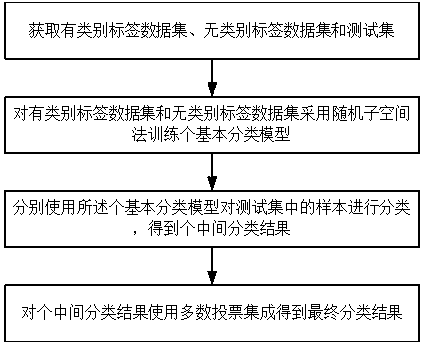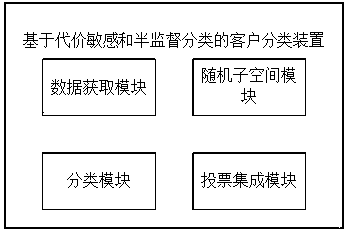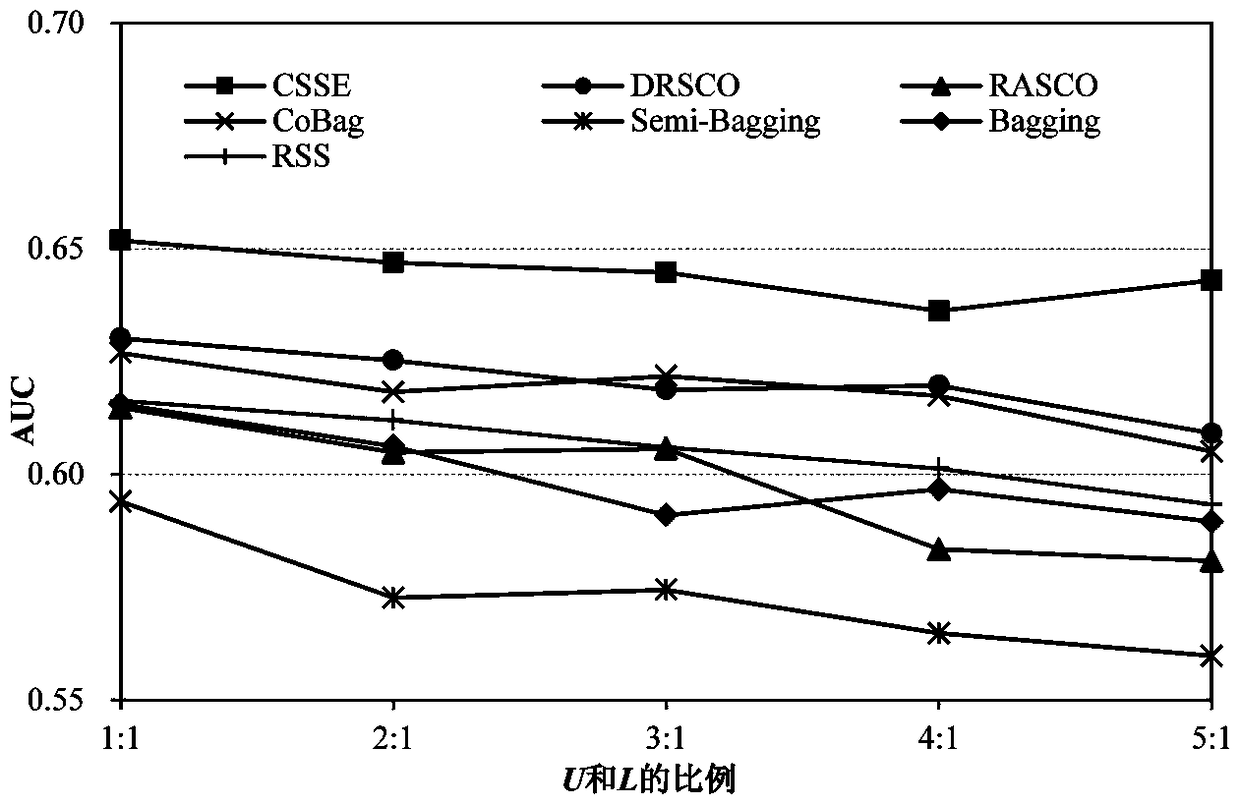Customer classification method and device based on cost sensitivity and semi-supervised classification
A cost-sensitive, classification method technology, applied in the field of customer classification methods and devices based on cost-sensitive and semi-supervised classification, can solve problems such as inability to mark categories, inability to determine whether to respond, overfitting, etc., to improve target customer selection performance , Good target customers choose the performance effect
- Summary
- Abstract
- Description
- Claims
- Application Information
AI Technical Summary
Problems solved by technology
Method used
Image
Examples
Embodiment 1
[0054] Such as figure 1 As shown, customer classification methods based on cost-sensitive and semi-supervised classification include:
[0055] S1. Obtain a dataset L with category labels, a dataset U without category labels, and a test set Test, and the number of initial samples in the dataset U without category labels is m.
[0056] S2. Using the random subspace method to train N basic classification models CS for the dataset L with category labels and the dataset U without category labels.
[0057] Described step S2 comprises:
[0058] S21. Selectively mark some samples from the unlabeled dataset U and add them to the labeled dataset L, and remove these samples from the unlabeled dataset U.
[0059] Described step S21 comprises:
[0060] S211. Set the threshold k, the threshold k represents the percentage of samples that you want to mark from the unclassified data set U in the unclassified data set U; calculate the samples of the selectively labeled sample set Q and the u...
Embodiment 2
[0071] Such as figure 2 As shown, the customer classification device based on cost-sensitive and semi-supervised classification includes data acquisition module, random subspace module, classification module and voting integration module.
[0072] The data acquisition module is used to obtain a data set L with class labels, a data set U without class labels and a test set Test, and the number of initial samples in the data set U without class labels is m.
[0073] The random subspace module is used to train N basic classification models CS by using the random subspace method on the dataset L with category labels and the dataset U without category labels.
[0074]The random subspace module includes a sample selective marker submodule and a random subspace submodule. The sample selective labeling submodule is used to selectively mark some samples from the unlabeled data set U and add them to the labeled data set L, and remove these samples from the unlabeled data set U. The r...
PUM
 Login to View More
Login to View More Abstract
Description
Claims
Application Information
 Login to View More
Login to View More - R&D
- Intellectual Property
- Life Sciences
- Materials
- Tech Scout
- Unparalleled Data Quality
- Higher Quality Content
- 60% Fewer Hallucinations
Browse by: Latest US Patents, China's latest patents, Technical Efficacy Thesaurus, Application Domain, Technology Topic, Popular Technical Reports.
© 2025 PatSnap. All rights reserved.Legal|Privacy policy|Modern Slavery Act Transparency Statement|Sitemap|About US| Contact US: help@patsnap.com



